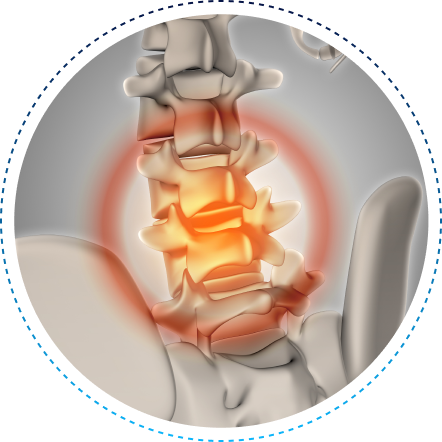Degenerative Disc Disease is a condition where the intervertebral discs, which act as cushions between the vertebrae in your spine, begin to deteriorate. This deterioration can lead to pain, reduced mobility, and other related symptoms. Despite its name, DDD is not actually a disease but a natural part of aging. However, its effects can be quite debilitating, impacting your daily life and overall well-being.


A herniated disc, also known as a slipped or ruptured disc, occurs when the soft inner gel of a spinal disc pushes through a tear in the tougher exterior. This can irritate nearby nerves and result in pain, numbness, or weakness in the limbs. The spine is composed of 24 vertebrae separated by discs that act as cushions, facilitating movement and absorbing shock. When a disc herniates, it can disrupt this balance and lead to significant discomfort.
A bulging disc, also known as a disc protrusion, occurs when the intervertebral disc—a cushion-like structure between the vertebrae of your spine—extends beyond its normal boundary. This condition can cause discomfort and pain, impacting your daily life and mobility. At First Choice Medical Center in Longview, WA, we specialize in integrative and regenerative medical treatments that address bulging discs and other spinal issues, helping you reclaim a pain-free and active lifestyle.



As we age, the spine undergoes wear and tear, leading to conditions like degenerative disc disease and osteoarthritis.

Trauma from accidents or sports can cause acute injuries like fractures or chronic issues like herniated discs.

Poor posture, lack of exercise, and obesity can contribute to spine problems.

Jobs that require heavy lifting or prolonged sitting can strain the spine.



This can be localized to the spine or radiate to other areas like the arms or legs.

Reduced flexibility and difficulty moving.

Often in the extremities, indicating nerve involvement.

Muscle weakness in the affected areas.

Difficulty with everyday activities due to pain or stiffness.

Avoid activities that exacerbate pain and engage in low-impact exercises like walking or swimming.

Applying a heating pad or ice pack can help reduce inflammation and alleviate pain.

Medications like ibuprofen or acetaminophen can provide temporary relief.

Ensure that your work and home environments support good posture.

Gentle exercises can improve flexibility and strengthen the muscles supporting the spine.



These treatments use the body's natural healing processes to repair damaged tissues. Techniques include platelet-rich plasma (PRP) and stem cell therapy.

Customized exercise programs designed to restore function and mobility.

Manual adjustments to correct spinal alignment and alleviate pain.

Targeted exercises to strengthen the spine and improve flexibility.

Non-opioid medications and other interventions to manage chronic pain.
We begin with a thorough consultation to understand your medical history, symptoms, and lifestyle.
Our team conducts a physical examination and may use diagnostic tests such as X-rays, MRI, or CT scans to identify the underlying cause of your condition.
Based on the findings, we develop a personalized treatment plan that may include regenerative therapies, functional rehabilitation, chiropractic care, and more.
Based on the findings from your consultation, examination, and diagnostic tests, we develop a customized treatment plan. This plan may include a combination of regenerative therapies, functional rehabilitation, and other non-surgical interventions.
We continuously monitor your progress and adjust the treatment plan as needed to ensure optimal results.
We provide guidance on lifestyle changes, exercises, and ergonomics to prevent future spine issues.
